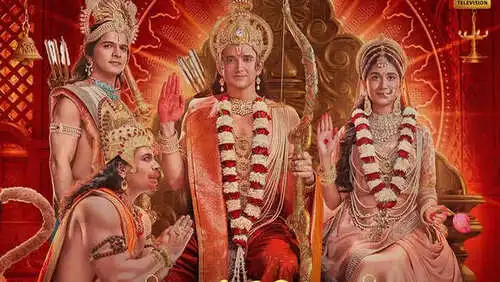For centuries, the Ramayana has been labeled as a myth, a poetic tale of gods, demons, and a divine prince on a rescue mission. But what if it wasn’t just a story? What if science, archaeology, and geography have quietly been building a case for its historical truth? From NASA’s satellite images of the mysterious Ram Setu to the ruins in Sri Lanka said to be Ravana’s palace, here are the most compelling pieces of evidence that challenge the idea of the Ramayana being “just mythology.”
1. The Mysterious Ram Setu
Ramanathapuram [Tamil Nadu], Apr 06 (ANI): A view of Ram Setu at Rameswaram, in Ramanathapuram on Sunday. (ANI Photo)
The Ram Setu (Adam’s Bridge) is a 50 km long chain of limestone shoals between India and Sri Lanka. Satellite images from NASA clearly show a man-made-like formation. Carbon dating of sand and coral samples suggest the bridge may be around 7,000 years old a timeline that eerily matches with the Treta Yuga era. If it’s just a natural formation, why does it perfectly match the path mentioned in the Ramayana?
2. Lanka Is Real and Still ThereRavana’s kingdom wasn’t floating in imagination it’s widely believed to be modern day Sri Lanka. The capital city mentioned, Lankapura, aligns with the area around Sigiriya and Ritigala, where locals still tell stories of a flying Ravana. Even today, Ashoka Vatika and Sita Eliya near Nuwara Eliya are marked as places where Sita was held captive.
3. Ancient Temples Predating Recorded History
6 Mind-Blowing Proofs Ramayana Is Not a Myth but Real History
The Ramanathaswamy Temple in Rameswaram is one of the 12 Jyotirlingas and is said to have been built by Lord Ram himself. The temple’s rituals and legends have been preserved for thousands of years suggesting a historical lineage too long to be just folklore.
4. Scientific Dating of Events in RamayanaA study by scientist Pushkar Bhatnagar used planetary positions mentioned in Valmiki’s Ramayana to trace astronomical dates. According to calculations, Lord Ram was born on 10th January, 5114 BCE a date supported by Vedic astrology and software like Planetarium Gold. If the Ramayana was “mythology,” why does it contain such accurate astronomical records?
5. Excavations at Hanuman Garhi and Sita Kund
6 Mind-Blowing Proofs Ramayana Is Not a Myth but Real History
Archaeologists have found signs of ancient civilization and structures in places like Ayodhya, Chitrakoot, and Janakpur areas mentioned in the Ramayana. These findings include tools, pottery, and remnants of ancient wells suggesting these weren’t “imagined” locations, but actual cultural hubs thousands of years ago.
6. Floating Stones in RameswaramMany claim to have seen floating stones in Rameswaram, where the Ram Setu begins. These stones have been linked to pumice, but their inscriptions of “राम” (Ram) and their strategic placement raise more questions than answers. Why would a myth require such elaborate engineering?
The Cultural Continuity: Over 2 Billion People Can’t Be Wrong
